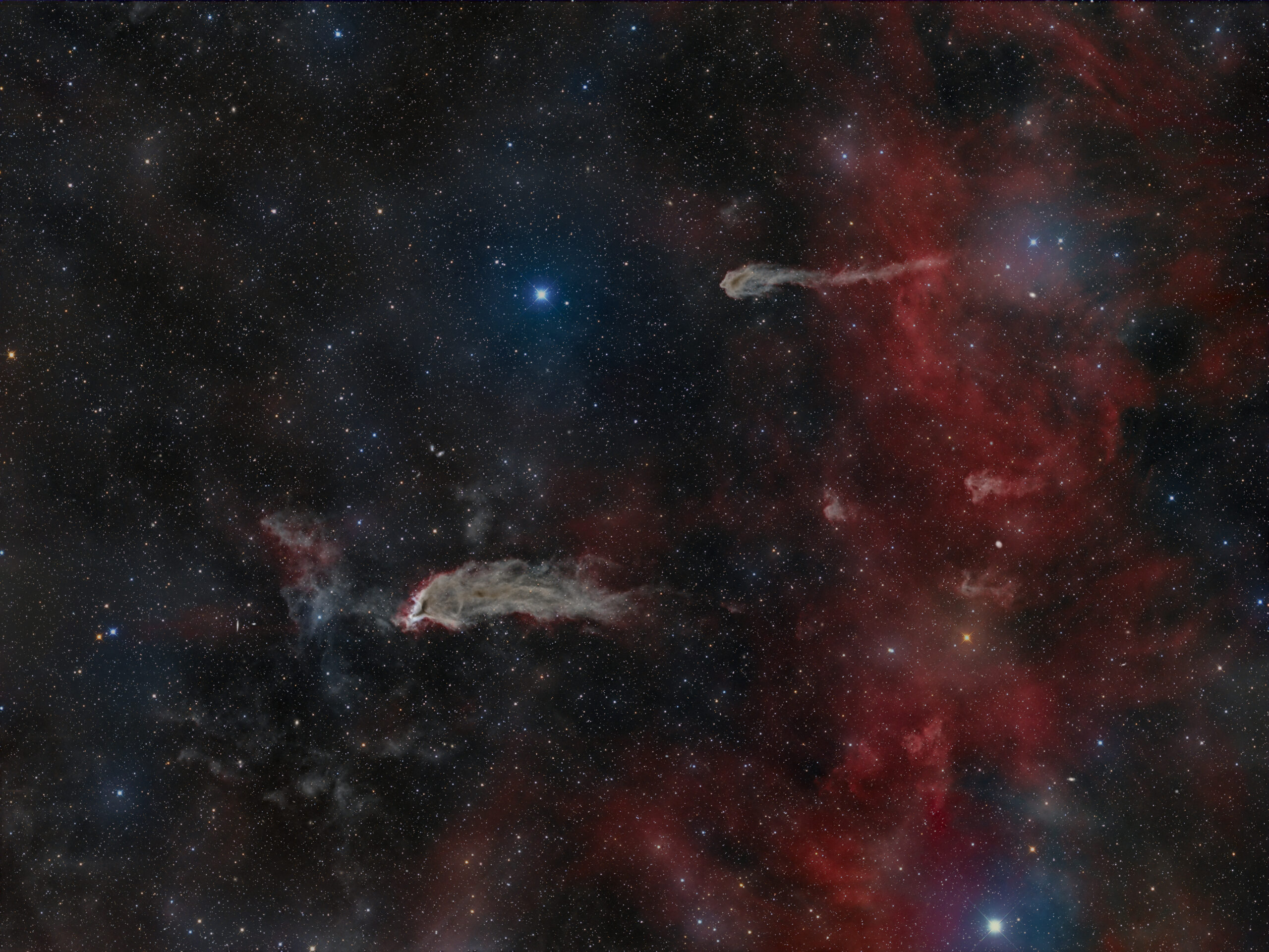
Cometary Globules 1 (image center) and 2 (upper right) are situated on the outskirts of the Gum nebula.
Cometary globules are dense clouds of gas and dust in space that often have a head and tail structure similar to a comet. They are often found in H II regions, which are areas of ionized hydrogen gas near young, hot stars
The exact mechanism that causes the formation of cometary globules is not known but there are currently two theories.
A nearby supernova explosion may have disrupted a spherical nebula, giving the cometary globule its shape. The mass of the cometary globule would be concentrated in the tail.
The cometary globule may have been shaped by the radiation pressure and stellar winds from nearby hot, massive stars. The mass of the cometary globule would be concentrated in the head.
Although not identified in catalogs as cometary globules there are two objects within the Hydrogen Alpha cloud on the right center of this image that appear to be cometary globules or are forming as cometary globules and possibly a third just on the center left edge of the Hydrogen Alpha region. If so it would tend to support the second theory of formation.
Imaged in LRGB and Hydrogen Alpha on my Planewave DR 350 at Observatorio El Sauce, Chile.
Image acquisition and processing: Mike Selby